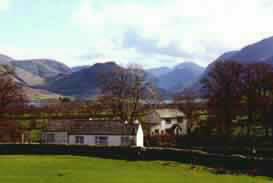
Retreat to the quiet of the Western Lakes

| An Autumn trekking holiday in India. Part 2: Darjeeling days. Days: 4 and 5 . . . (26th and 27th October 2004) Trek details : Two nights in Darjeeling, seeing local sights and attractions, then off to the Singalila Ridge for our six day trek. Weather : Post monsoon - Clear early morning, sunny and warm if rather hazy distant views as the days progressed. |
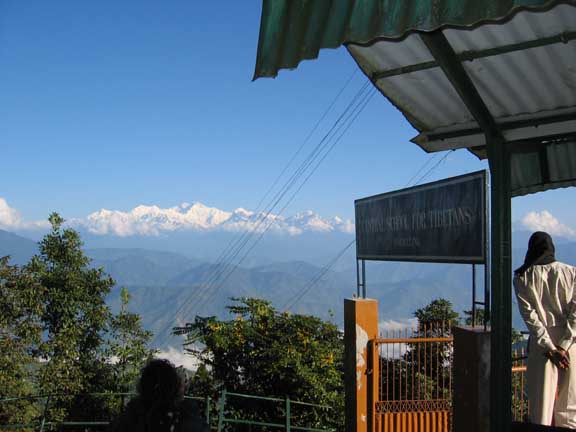 |
Darjeeling School for Tibetans - Main entrance - How about that for a classroom view ?
Click here or in the picture for a larger panorama from Darjeeling.
 |
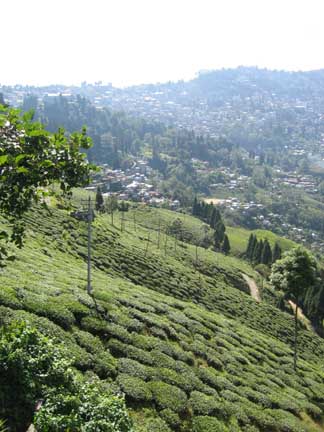 |
Our ideas of what to expect in Darjeeling was based on our school history books and brief descriptions in the brochures and guides. Here were the expected tea plantations perched on the steep valley sides where they grow and harvest some of the finest teas in India. They were first planted by the British in the 1830's
What we hadn't expected, and what was most disappointing, was that the old colonial township was now a sprawling conglomeration of hotels, houses, half completed house building sites and tin shacks. Everywhere there was rubbish in the streets and foul water in the gutters. As in other parts of India, water, electricity and phone systems had seemingly been thrown together as the need arose. Town planning and organisation seemed non-existent.
They seemed totally unable to cope with the late 20th century plastic packaging revolution. Waste collection was seemingly hap-hazzard and the mess, general pollution and the state of the roads came as a real surprise !
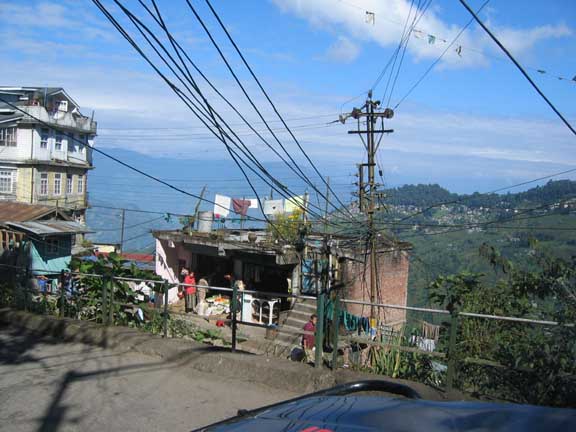
Typical town scene - beautiful distant views - disorganised foreground !
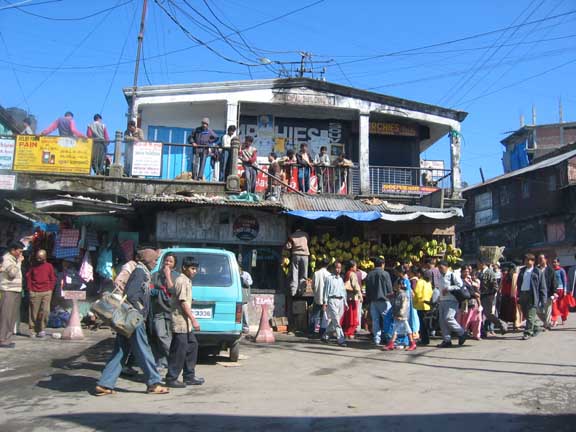
Bananas (and most other things) on sale in the town main bazzar.
India has over a billion inhabitants, a fair number of them were here today!
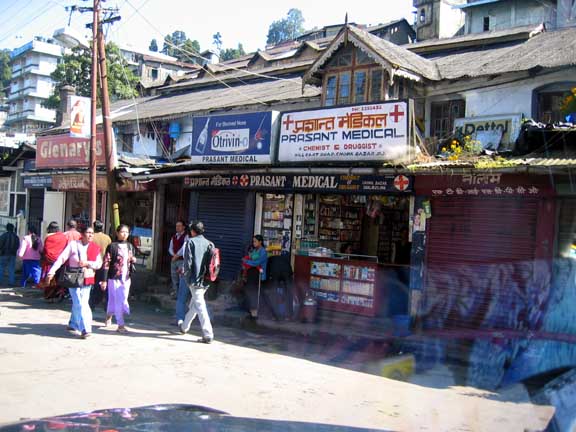
A lock-up chemist shop dispensing medical services and over the counter treatments.
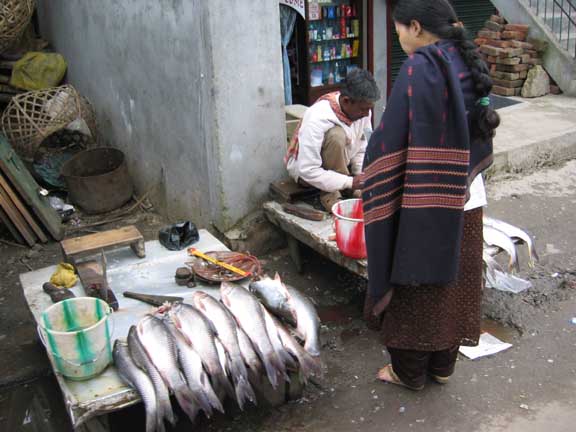
Fresh fish seller preparing and selling fish by the roadside.
Indian Culture can sometimes be quite a "culture shock".
*****
Today we went on to visit to the Tibetan Refugee centre where Darjeeling (with additional international financial assistance) offered a home and workplace for families who had fled from the Chinese invasion of Tibet.
The centre was a refuge and workplace for older people who has travelled from their native country and their children and grandchildren. It has homes, a school and many different workshops.
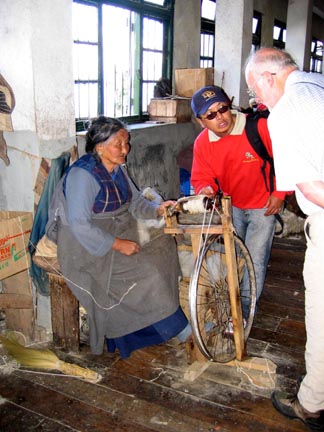 |
The Spinning Rooms where the ladies were turning raw wool into yarns for carpets and knitting. ( note the old bicycle wheel utilised for a spinning wheel ) The men were into carpentry, metal work and machine sewing to name just a few of the skills on display. An excellent place to buy gifts. |
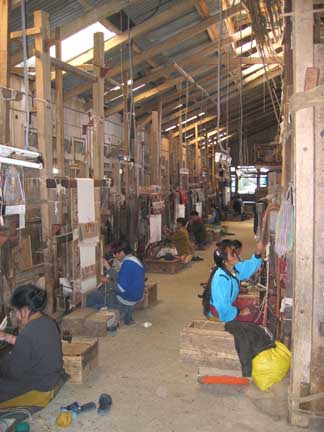 |
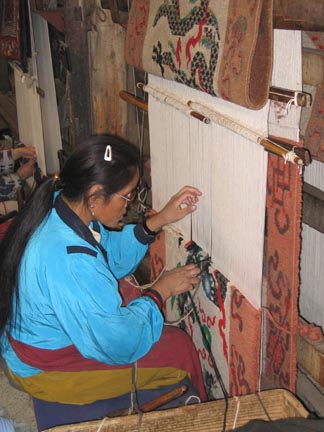 |
The Carpet workshop. Hand powered small carpet looms needed a sharp eye and nimble fingers.
One of these carpets, with the assistance of the trekking company, made it to our Pelling hotel and eventually back to Loweswater in the bottom part of our trek bag. It now has pride of place in our front room.
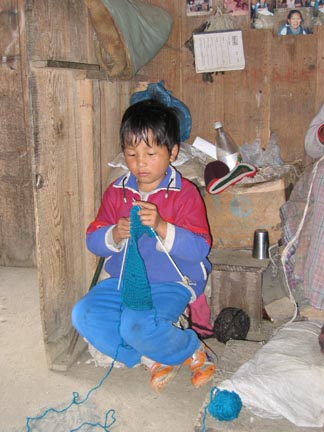 |
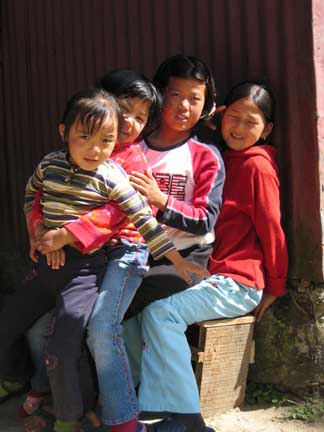 |
All age groups live at the centre.
This young lad learns knitting from his grandmother, some of the others today are just playing out in the courtyard.
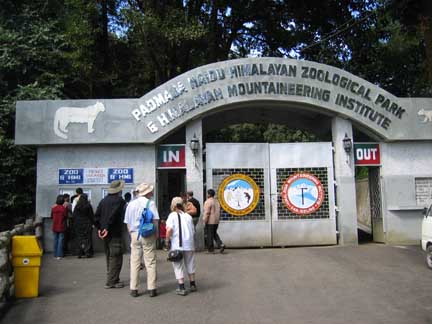
At the top of town is the Zoological Gardens and in the same grounds, the Himalayan Mountain Institute.
The zoo is dedicated to captive breeding local rare species, notably the Sikkim Red Panda, the Himalayan Bear and the Snow Leopard, all seen below.
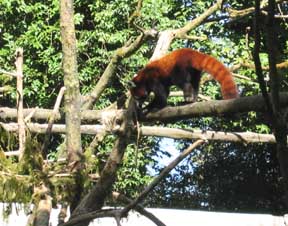 |
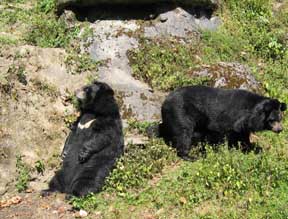 |
 |
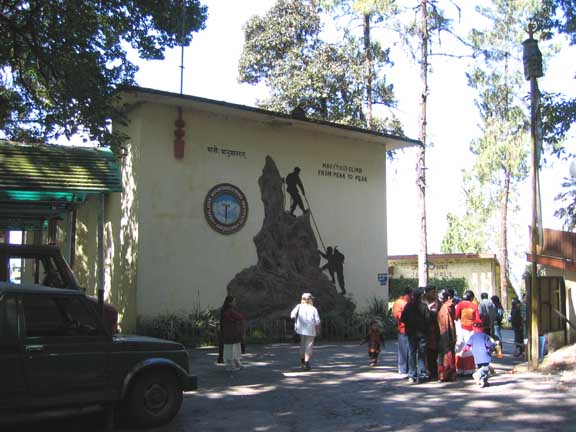 |
The Institute itself is dedicated to training potential Sherpa and International mountain leaders in the basics of technically safe and environmentally responsible climbing and trekking. The idea is to bolster the economy without destroying the beauty people come all this way to see. |
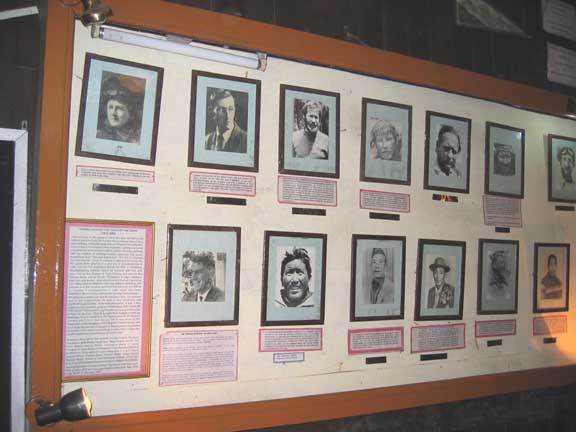 |
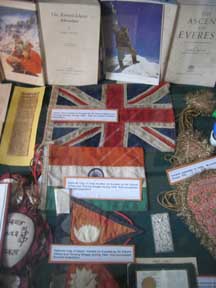 |
The Institute Exhibition includes pictures of famous mountaineers and mementos from many Everest and Himalayan climbs.
The photos include Edmund Hillary, Chris Bonnington, Doug Scott, Dougal Haston, and (Sherpa) Tensing Norgay.
Keen spotters will see a version of the picture of Sherpa Tensing on Everest, the same one that The Rheged Centre uses in their publicity back here in Cumbria.
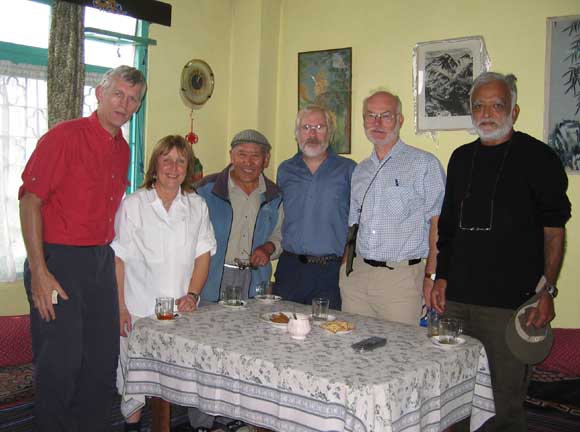 |
The second photo on the bottom row of the photo above is of a local gentleman called Gumba.He has gone on to climb Everest several times and his family now run Rimo Expeditions, the trekking company which organised the Indian end of our holiday. His family makes quite a good cup of Darjeeling Tea, and we were honoured to be invited into his home to meet him. A most fit and agile looking gentlemen now well past retirement age but as busy as ever. photo - Roger, Ann, Gumba, Rod, David and Matti. |
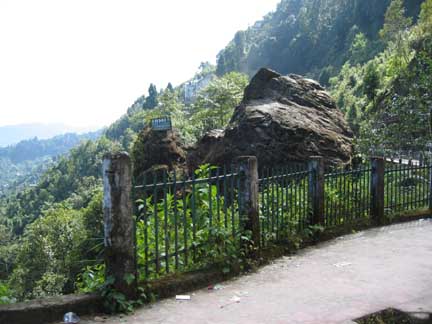 |
 |
Two local sights, Tensing Rock, still used today to teach beginners to rock climb,
and secondly an improvised road roller - the roads up here would be vastly improved if only it was used a bit more often !
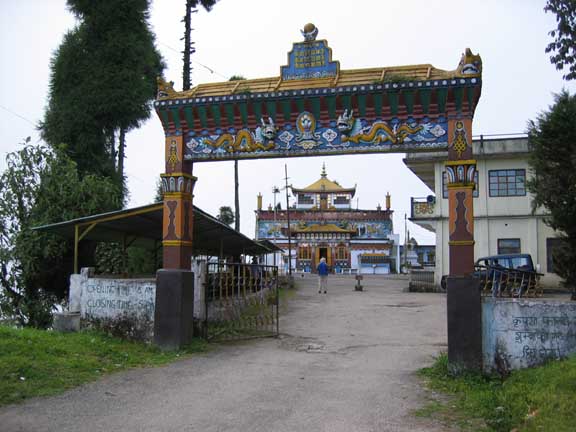
While in Darjeeling we also visited the Yiga Choling Monastery in Ghoom, built in 1850 and beautifully painted and maintained. Its treasures include a 5 meter guilded statue of the Matreya, or future Buddah.
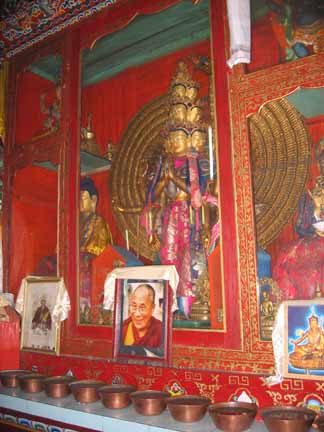 |
A plaque outside perhaps summed up the Buddhist religious idea: " There is a way, a middle path, avoiding the two extremes, discovered by the Tathagata, a path which opens the eyes and bestows understanding which leads to the higher wisdom, to full enlightenment, to Nirvana. "
The photo is of the Dahli Lama. |

Another more modern Buddhist temple and school in Darjeeling.

Singalila Ridge from Darjeeling.
Our trek was going to take us along the skyline in this photo from the middle distant valley to the hills on the far right, so next day we re-packed our bags with the boots at the top and the posh clothes at the bottom.
Then it was bouncing along the local roads to Maneybhanjang in our 4x4. On the way we passed Ghoom station, one of the highest railway station in the world, part of the famous Darjeeling Mountain Railway.
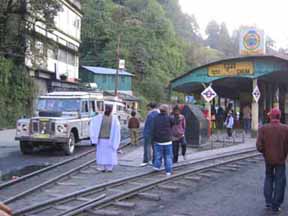 |
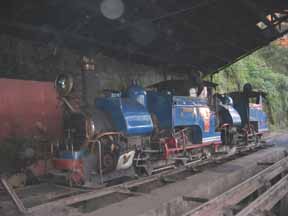 |
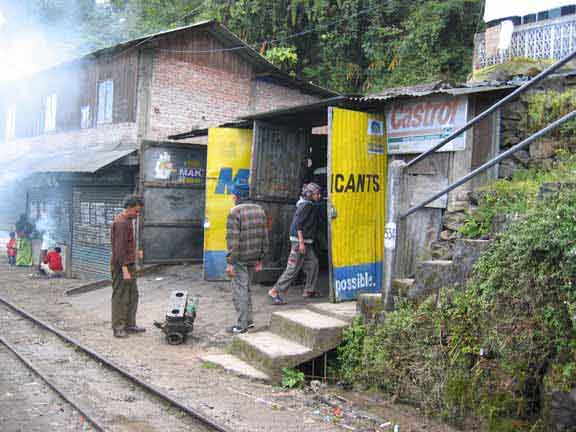
One of the many small businesses along the way.
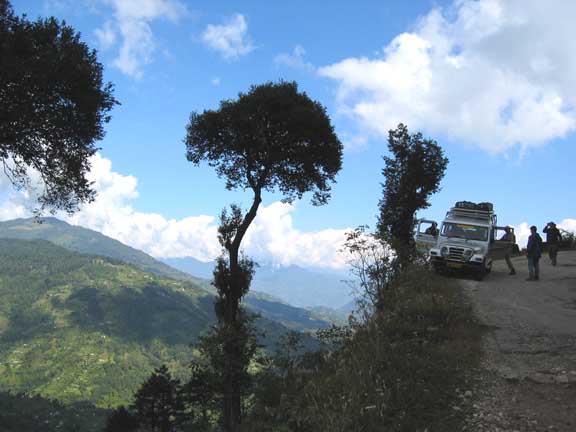
Nearly there - a brief stop to admire the view.
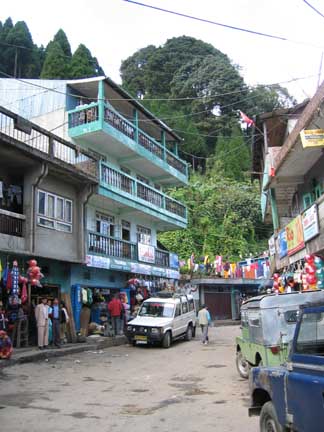 |
Maneybhanjang Township.( Altitude 2134 metres )
An "outdoor clothing shop" selling everything from bananas (3p) to quilted jackets (£3). |
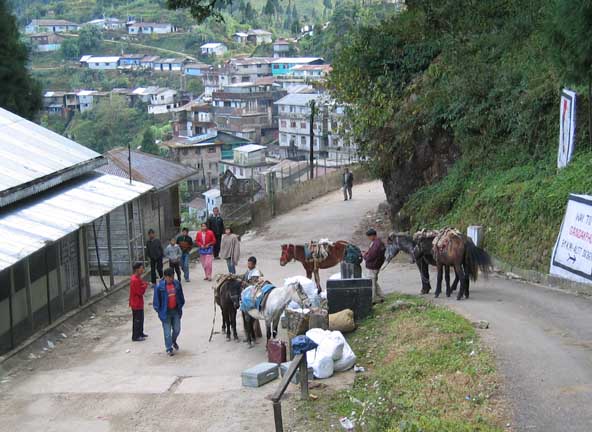
Looking down on the village as our horsemen arrive to collect our trek bags and equipment.
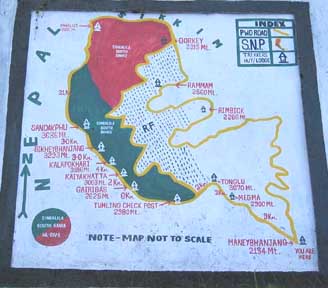 |
Our route - from bottom right to top left - Maneybhanjang to Phallut (the highest point at 3650 metres / 12,000 ft ) then back down to Ramman and Rimbic . . . No Problem ! ( click on next to continue ) |
- - - o o o - - -
Technical note: Pictures taken with a Canon IXUS 400 Digital camera.
Resized in Photoshop, and built up on a Dreamweaver web builder.
This site best viewed . . . with a one eye shut against the road conditions.
Go to Next - Go to page 1 2 3 4 5 . . . Home page . . . Go To Archive 2004
© RmH . . . Email me here